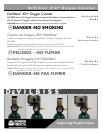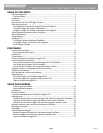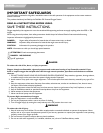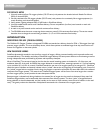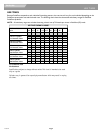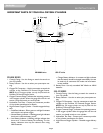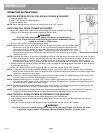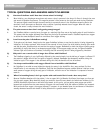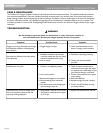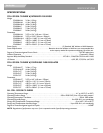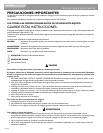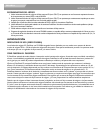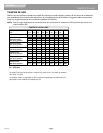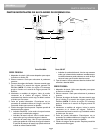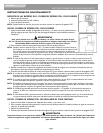
A-535-CYL
9
E N G L I S H
TYPICAL QUESTIONS AND ANSWERS ABOUT PULSEDOSE
TYPICAL QUESTIONS AND ANSWERS ABOUT PULSEDOSE
Q. How does PulseDose work? How does it know when I’m inhaling?
A. When inhaling, your diaphragm moves down and causes a drop in pressure in the lungs. Air flows in through the nose
and mouth to equalize the pressure. This negative pressure is also present at the nose and mouth during inhalation.
This pressure signal travels through the nasal cannula to a pressure sensor in the PulseDose conserving device. An
electronic circuit then opens an electrical valve to deliver a precisely metered dose of oxygen. When the valve is
closed, the sensor is ready to detect the next inhalation.
Q. The pulse seems so short. Am I really getting enough oxygen?
A. Yes. PulseDose delivers a precise burst of oxygen at a relatively high flow rate at the leading edge of each inhalation.
This assures that the oxygen delivered flows deep into the lungs for maximum benefit. PulseDose requires less oxygen
to deliver the same therapeutic benefit as continuous flow oxygen delivery.
Q. I can’t hear the pulse. Is PulseDose working?
A. If the pulse can’t be heard, simply look at the green PulseDose indicator to see that the device is being triggered by
inhalation. For further assurance, hold the end of the cannula in front of your lips while inhaling through your mouth
and feel the pulse. PulseDose does not monitor the supply of oxygen. Remember to check the oxygen contents gauge
periodically to verify that there is an adequate oxygen supply. If the oxygen supply runs out, the green PulseDose
indicator light will continue to illuminate, indicating that the conserving device is being triggered by inhalation.
Q. Why can’t I use a cannula which is longer than 35 feet with PulseDose?
A. The PulseDose triggering is not significantly affected by the cannula length, but the delivery of oxygen is affected. If
the cannula is longer than 35 feet, the pulse of oxygen is delayed. Remember the therapeutic moment during the
inhalation cycle. If the oxygen is not delivered during this time, the benefits will not be realized.
Q. I’ve always used humidifiers with oxygen. Should I use a humidifier with PulseDose?
A. No. PulseDose is not able to sense inhalation through the water in the humidifier. Also, many patients find that
humidification is not necessary with PulseDose. They find that PulseDose improves comfort because it delivers a very
small amount of oxygen during the early part of inhalation, while the rest of the inhalation is composed of normal
room air.
Q. When I’m breathing faster, I don’t get a pulse with each breath. Don’t I need a dose every time?
A. Because PulseDose breathes with the patient, it has an upper limit (40 Breaths Per Minute) that keeps you from get-
ting too much oxygen. When breathing slowly, you receive a dose with every breath. As breath rate increases (up to
40 BPM) PulseDose still delivers a dose with every breath. At this point, you are getting more oxygen per minute
because each pulse delivers the same amount of oxygen with each breath while the number of breaths has increased.
With continuous flow oxygen, the oxygen delivered is constant. As you breathe faster, the enrichment of inhalations
actually decreases because each breath is being diluted with a greater amount of room air.



